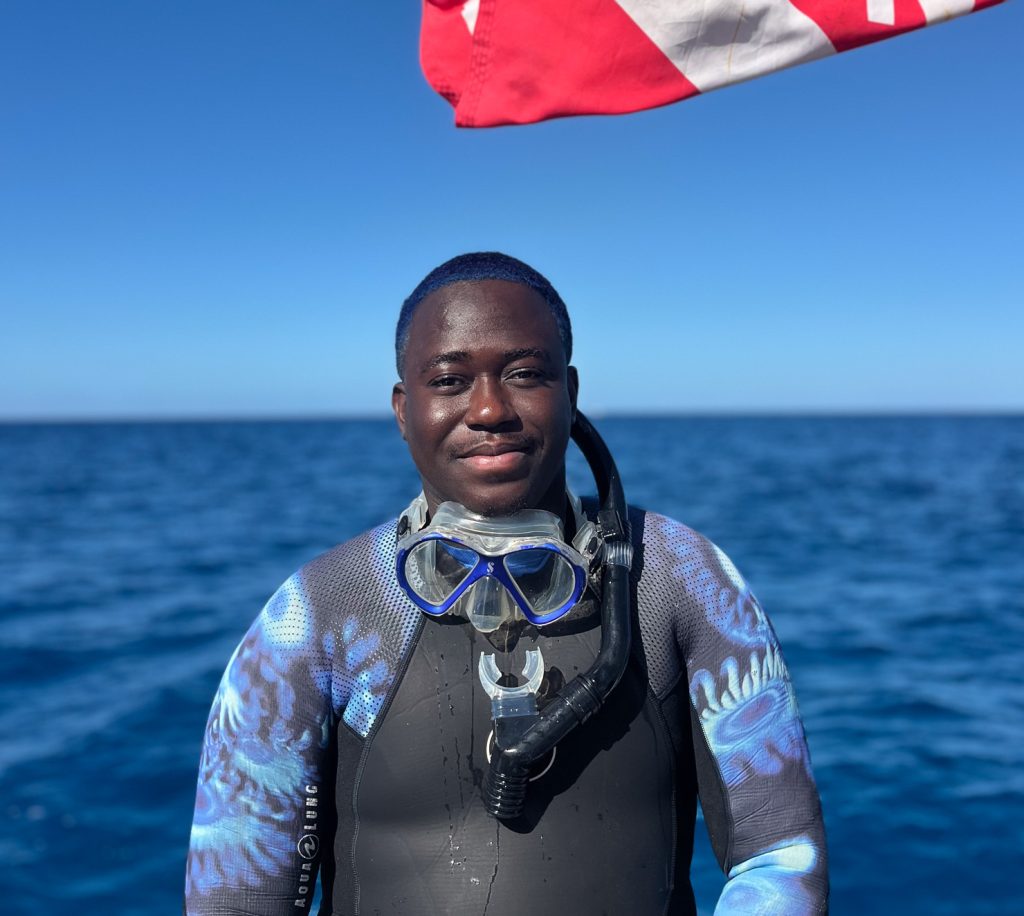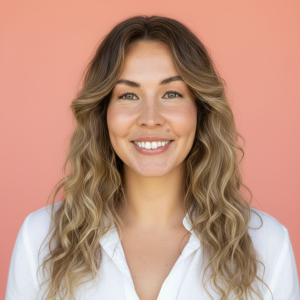
PIMS & IDC: Empowering New Dive Instructors for Marine Conservation
The Perry Institute for Marine Science (PIMS) proudly hosts a PADI Instructor Development Course (IDC) at the end of every summer, helping train the next generation of certified scuba instructors.
This Q&A features Duran Mitchell, a coral gene bank technician at PIMS, who recently became a PADI Open Water Scuba Instructor. Duran: It’s been an incredible journey. I began with an Advanced Open Water Diver certification, doing hundreds of dives treating corals affected by
Stony Coral Tissue Loss Disease and monitoring reef health through AGRRA surveys. Over time, my diving confidence, underwater skills, and understanding of coral restoration deepened.
Moving into 2025 as a PADI Open Water Scuba & Specialty Instructor is a milestone — it feels rewarding to see that progression in capability and responsibility. It also gives me a stronger foundation to contribute meaningfully to PIMS’
coral restoration initiatives. Duran: My motivation was twofold. First, diving has always been a passion — exploring beneath the waves and connecting with marine life drives me. Second, I’ve long hoped to share that passion and empower others, especially young Bahamians, to care for and protect our marine environment. The challenges included the rigorous schedule, mastering both the teaching curriculum and dive theory, and maintaining a high standard of presentation and professionalism. The IDC combines the
Assistant Instructor (AI) and Open Water Scuba Instructor (OWSI) modules
(PADI course info). The rewards, however, have been equally great: becoming a certified instructor, being able to mentor new divers, and expanding my role in conservation education within PIMS. Duran: As an instructor at PIMS, I can now train new divers locally, run undergraduate or community dive courses, and integrate dive safety and marine awareness into our restoration efforts.
My role is no longer limited to behind-the-scenes coral work — I can actively engage in capacity building, outreach, and education for both staff and community members. Duran: Training in the IDC has boosted my confidence, leadership, and teaching skills. Professionally, it unlocks new responsibilities and possibilities for career progression (for instance, eventually becoming an IDC Staff Instructor).
Personally, it reinforces a sense of purpose — knowing that the investment in me has ripple effects for the community and marine ecosystems. Duran: Initially, capacity building was a broad idea — “helping local talent grow.” Now, after the IDC experience, I view it as structured empowerment: giving people access to resources, mentoring, formal training, and networks so they can be leaders themselves.
It’s not just about teaching skills, but fostering agency, sustainability, and local ownership. Capacity building is also widely discussed in marine conservation circles. Programs like
MPAConnect use capacity tools to assess and strengthen management skills in marine protected areas.
In The Bahamas, initiatives like the
Debt Conversion Project for Marine Conservation
also invest in training and local empowerment. Duran: The idea that I can guide someone’s first dive, their first spark of awe for the reef — that is deeply motivating. I love the concept of passing the torch: showing younger Bahamians that marine science and conservation are legitimate, dynamic career paths.
I can teach them not only dive skills but stewardship, marine ecology, and appreciation of the underwater world. Duran: “Dive right in!” Don’t wait for perfect conditions. The waters around our islands are full of life but under real threat from climate change, pollution, and habitat damage. Choose to be part of the solution.
Work hard, stay curious, volunteer, network, and be bold. You’ll never be bored — there’s always something new to explore underwater or in conservation. Duran: This is just the beginning. I aim to become an IDC Staff Instructor and ultimately a PADI Course Director, so that I can lead future IDC courses and train new instructors in The Bahamas.
In parallel, I plan to continue advancing in coral restoration, reef resilience, and community engagement. Duran: By building a local cadre of trained dive instructors and marine educators, scaling dive-based awareness, and improving reef restoration efforts.
Through PIMS and partners, I hope to see stronger local institutions, better-managed marine protected areas, and more homegrown conservation leadership. A professional-level scuba instructor training program composed of two parts: the Assistant Instructor (AI) course and the Open Water Scuba Instructor (OWSI) program.
Learn more on PADI’s official site. Most IDCs run for 8–10 days, followed by a two-day Instructor Examination. Training includes dive theory, confined and open water presentations, risk management, and teaching standards.
Course outline example. After passing the Instructor Exam, graduates become PADI Open Water Scuba Instructors (OWSI), qualified to teach recreational courses up to the Rescue Diver and specialty levels. We see it as a strategic investment in local capacity building — training Bahamians to become professional instructors who can lead, educate, and inspire others through diving and conservation. Building local conservation leaders connects directly to national efforts like the
Bahamas Debt Conversion Project for Marine Conservation
, which channels funds toward protected area management and training.
Regional initiatives like
MPAConnect
also help build professional capacity for sustainable marine management.1. Looking Back Since 2022
Q: You joined PIMS in 2022 as a coral technician and advanced diver. Now you've completed the IDC and become a PADI Open Water Scuba Instructor. What does it feel like to look back on your journey so far?
2. Becoming a PADI Instructor
Q: What motivated you to pursue the IDC, and what were the biggest challenges and rewards of that process?
Q: How do you see this new certification expanding your role and impact at PIMS?
3. The Power of Capacity Building
Q: PIMS emphasizes investment in staff and local capacity. How has this investment in your training shaped you personally and professionally?
Q: What does “capacity building” mean to you now versus when you first joined PIMS?
4. Inspiring the Next Generation
Q: As a new PADI Instructor, what excites you most about mentoring and teaching future divers?
Q: What advice would you give to young Bahamians interested in marine science or diving?
5. Looking Ahead
Q: Now that you’ve reached this milestone, what are your next career goals?
Q: How do you hope to keep contributing to conservation in The Bahamas and beyond?
FAQ: What You Should Know About the IDC Course at PIMS
Q: What is the PADI IDC (Instructor Development Course)?
Q: What are the prerequisites?
Q: How long is the IDC and what’s involved?
Q: What does an IDC graduate become qualified to do?
Q: Why does PIMS host this course each summer?
Q: How does this training support broader conservation in The Bahamas?



